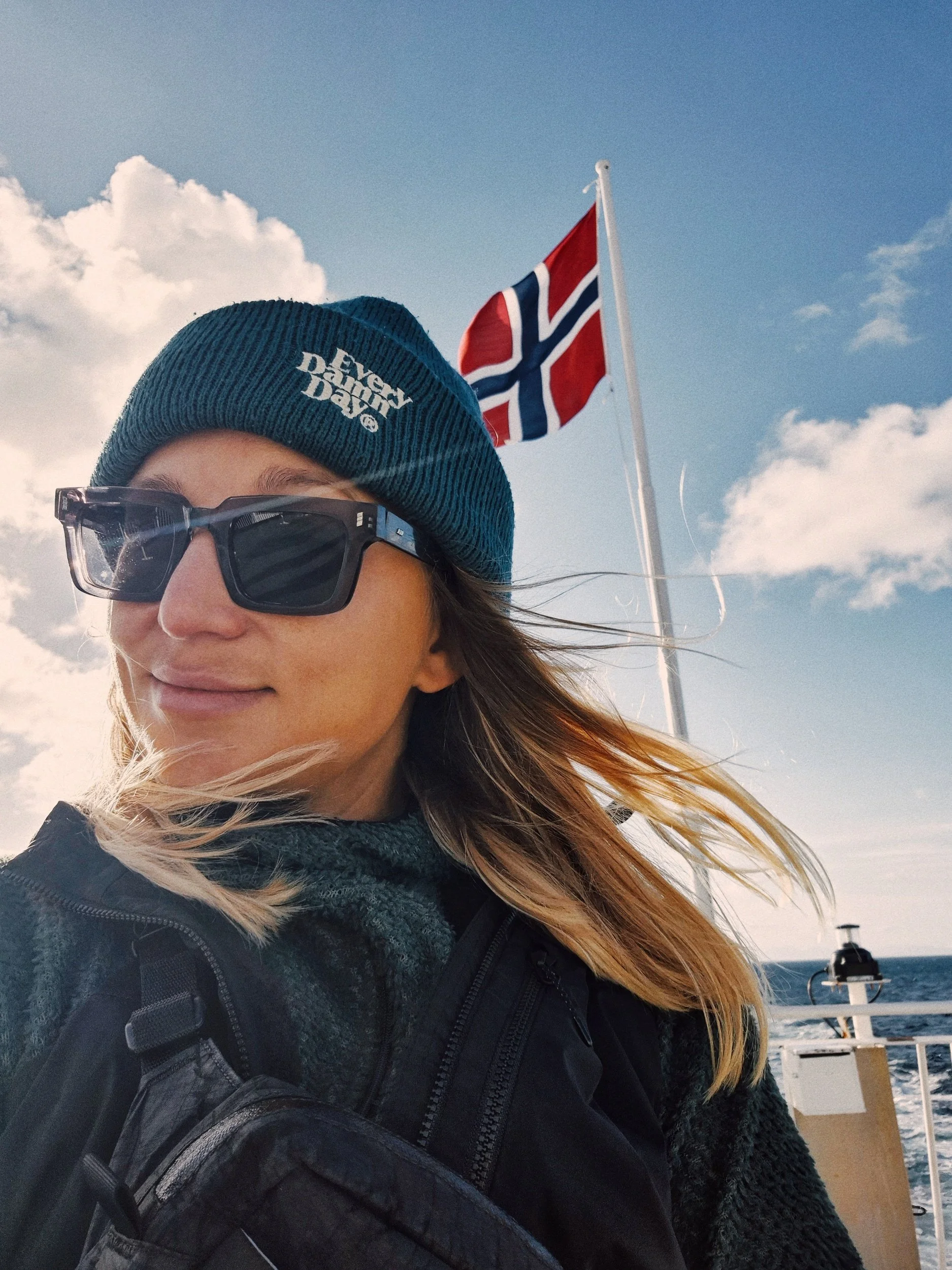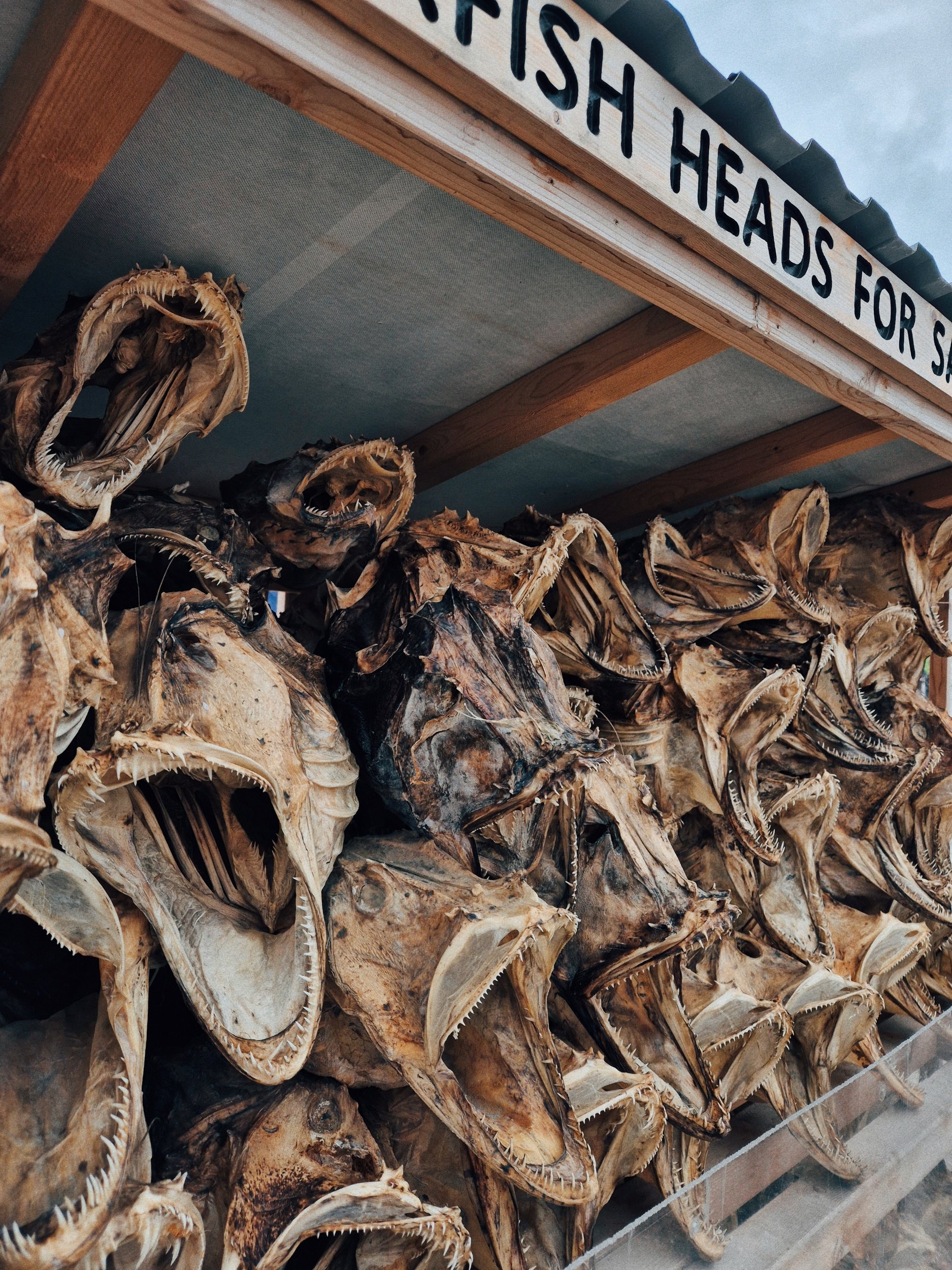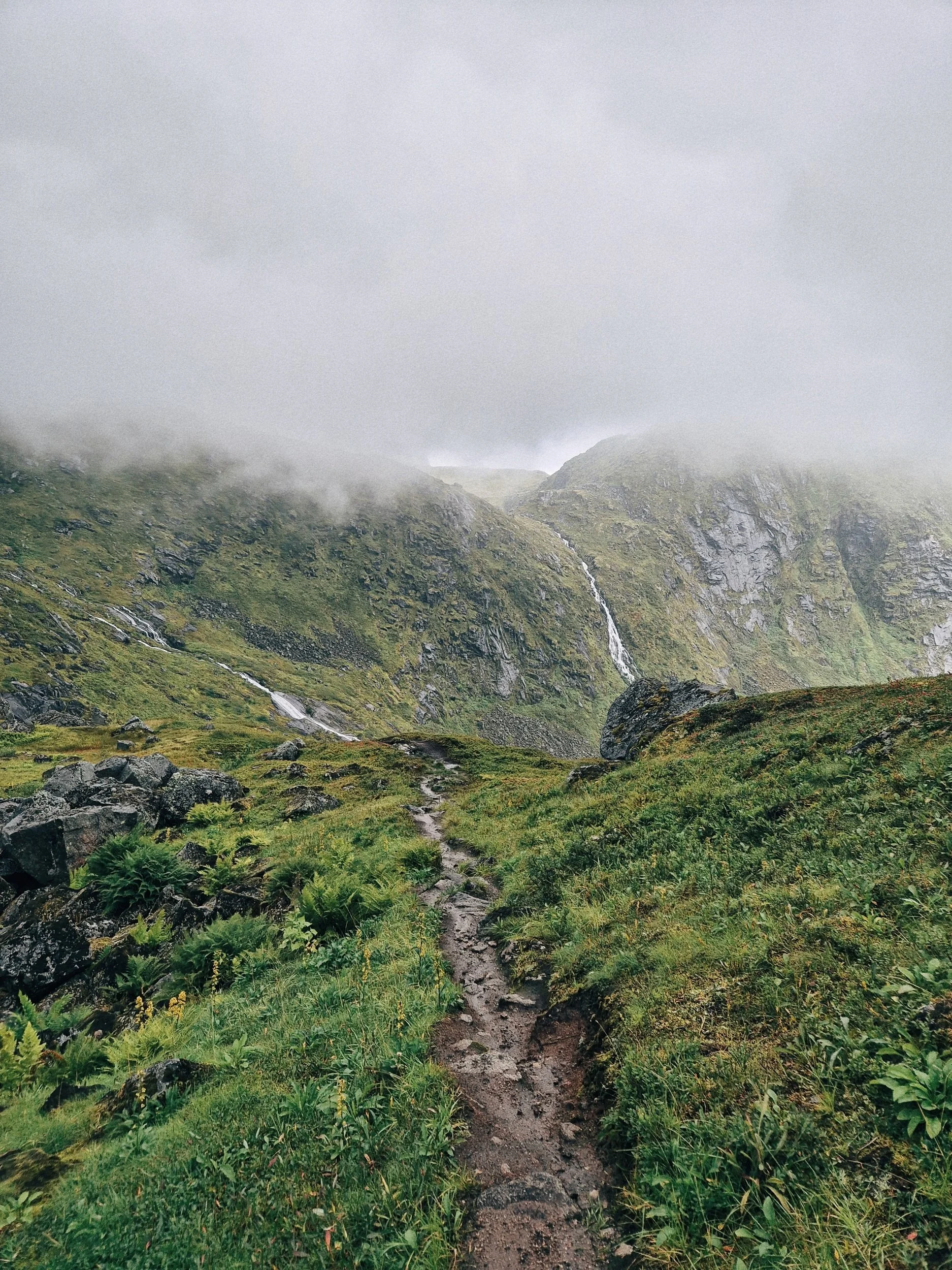You snooze, you lose.
Section 1 & 2 of the Lofoten Long Crossing
From Å to Vindstad
Song stuck in my head: "Takes One to Know One" by The Beaches
Audiobook of the day: "All Fours" by Miranda July
I miss: Sleep, since I barely got any.
After disembarking from the ferry, I met an elderly man. I asked him where I could buy gas, and he directed me to Reine, a town in the opposite direction of where I was headed. I shrugged it off, saying it wasn't that important—I was eager to get going and would just play it by ear. I figured I’d find gas somewhere. He looked at me like I was a fool, as if I didn’t know what I was doing, even though I had spent four months cold soaking on the Pacific Crest Trail.
Doubts crept in. Was I being careless?
At the next shop, in my direction, I found gas. Once again, I learned: trust your gut. The trail will provide.
The Lofoten Mountains are absolutely stunning, but as steep as they come. I nearly had to cling to things to avoid falling backwards. When I reached the top of Ågskaret, my first Lofoten pass, and looked down at the ocean, it seemed absurd to descend to the water only to climb right back up—even if the trail technically started there. It felt so pointless that I turned around at the peak, walked back to Å where I had come from, and had a coffee. I decided to push on, thinking I’d camp by a nearby lake. But when I got there, it felt too early to stop, so I kept going—up one hill, then another—until I spotted the DNT hut I’d seen on the map.
I had a key, thinking it was universal for all huts in Norway. However, when I stood in front of the door, I realized it wasn’t the right key. With night approaching, I had to find a campsite quickly. I prefer to reach camp around 7 p.m.—it gives me time to settle in, find a river for a quick wash, stretch, and cook dinner.
I had pushed hard on the first day because of the ferry the next morning. There was supposed to be a dock at the end of section 2 with a number to call for a water taxi. I tried finding the number online but had no luck. Something didn’t feel right, so I looked further and found another dock in Vindstad, further along the shore of the same lake. The path on the map looked thin, and I wasn’t even sure it was a trail. To ensure I caught the ferry at 11:20 a.m. in Vindstad, I planned to wake up at 6. That would give me five and a half hours to get there. Plenty of time, I thought. Well… looking back, I wouldn’t call it plenty.
I had dinner overlooking a gorgeous mountain lake, not a soul in sight. The air was still warm, and I spread my sweat-drenched clothes on rocks around the campsite to dry. Everything was perfect. As I lay in bed listening to an audiobook, I noticed the wind picking up. I’d anchored my tent with heavy rocks, as I always do, so I wasn’t worried about it flying off the cliff. But by midnight, the wind was so strong that the thought crossed my mind. I hadn’t slept a wink. The flapping of the tent walls was unbearably loud, and I eventually decided it was too dangerous to stay. I packed up my gear, put on my rain jacket and headlamp, and headed out into the night. While dismantling my tent, I kept one foot on it to prevent it from blowing away. I scrambled down the hill until I found a quiet spot, set up the tent again, and finally fell asleep.
A gust of wind woke me from a dream where I was in a tent, unable to sleep. The wind had changed direction, of course. Now it was coming from the opposite side, and to make matters worse, it had started to rain. Wonderful.
The last time I wore earplugs while camping, I ended up with a rat in my hair (read up on that in the New Zealand section), so I refused to wear them again. I needed to stay alert, to hear what was going on, even if that meant not sleeping because of the wind. Despite the rain and wind, I eventually dozed off until my alarm went off at 6 a.m. “Time to catch that ferry,” I thought. I debated sleeping for another hour but felt it was safer to get up. I dislike hiking in the rain—really dislike it, especially when it’s windy too. But despite my aversion, I hiked up hill number one, then hill number two. Standing at the top, I looked down at the “call-me-maybe” ferry dock. It wasn’t far, but it was steep. As I descended, I quickly realized it wouldn’t be easy. The rocks were smooth, large, and slippery, and I fell multiple times, cursing and yelling. No one was around, so I didn’t care about making a scene. It took a long time to reach the bottom, only to find no trace of a number anywhere. “Great,” I thought. Just as I had suspected.
Now I needed to find the barely-existent trail to Vindstad. I did, and it was tough—up and down over (you guessed it) big, round, slippery rocks. What looked like a short stretch on the map took me an hour, a lot of sweat, but no tears. I was relieved when I finally reached the cluster of five houses and a small café that made up the town of Vindstad. It was 10:18 a.m., and I was so glad I hadn’t hit that snooze button.






































